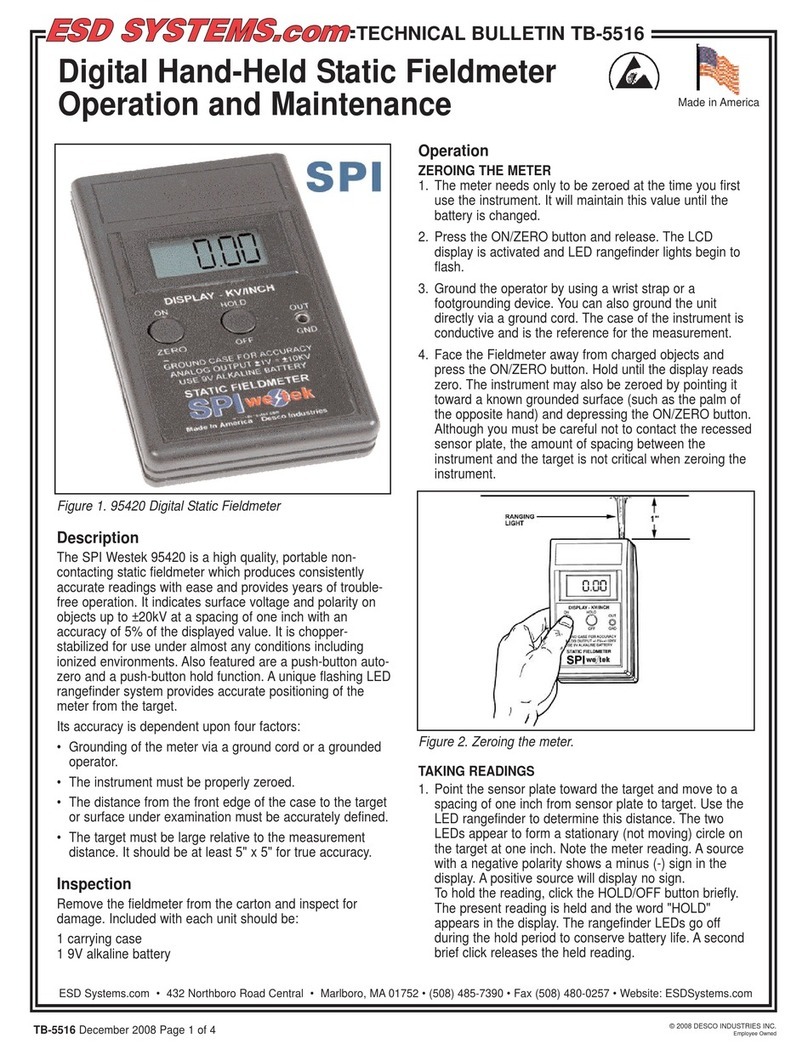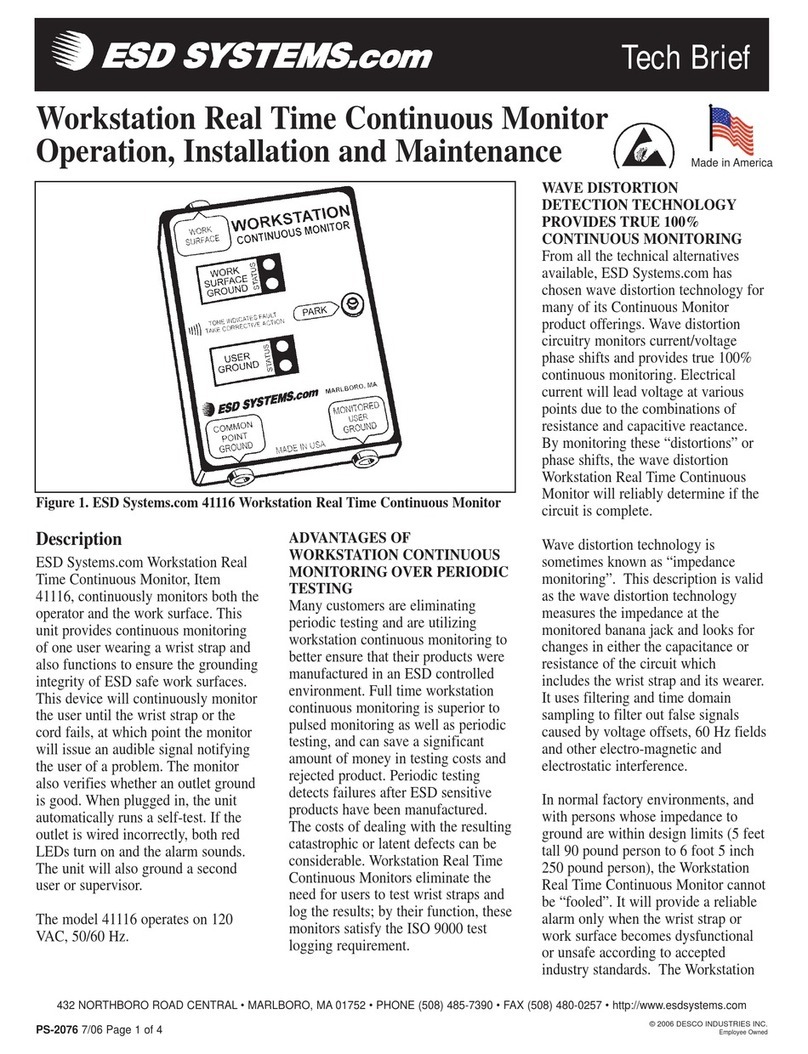PS-2078 Page 4 of 4
Limited Warranty
ESD Systems.com expressly warrants
that for a period of one (1) year from the
date of purchase, our Mini Megs will be
free of defects in material (parts) and
workmanship (labor). Within the
warranty period, the unit will be tested
repaired or replaced at our option, free of
charge. Call Customer Service at 508-
485-7390 for a Return Material
Authorization (RMA) and proper
shipping instructions and address. You
should include a copy of your original
packing slip, invoice, or other proof of
purchase date. Any unit under warranty
should be shipped prepaid to the ESD
Systems.com factory. Warranty repairs
will take approximately two weeks.
If your unit is out of warranty, ESD
Systems.com will quote repair charges
necessary to bring your unit to factory
standards. Call Customer Service at
508-485-7390 for a Return Material
Authorization (RMA) and proper
shipping instructions and address.
Warranty Exclusions
THE FOREGOING EXPRESS
WARRANTY IS MADE IN LIEU OF
ALL OTHER PRODUCT
WARRANTIES, EXPRESSED AND
IMPLIED, INCLUDING
MERCHANTABILITY AND FITNESS
FOR A PARTICULAR PURPOSE
WHICH ARE SPECIFICALLY
DISCLAIMED. The express warranty
will not apply to defects or damage due
to accidents, neglect, misuse, alterations,
operator error, or failure to properly
maintain, clean or repair products.
Limit of Liability
In no event will ESD Systems.com or
any seller be responsible or liable for any
injury, loss or damage, direct or
consequential, arising out of the use of or
the inability to use the product. Before
using, users shall determine the
suitability of the product for their
intended use, and users assume all risk
and liability whatsoever in connection
therewith.
Relative Humidity 0% to 99% (non
condensing)
Operation Resistance bridge
Readout Seven LEDs
Resolution One order of
magnitude
Accuracy ±10% all, except
±20% 109, 1010
Repeatability ±3%
Weight 6 ounces
Dimensions 4" x 2.5" x 1.75"
Calibration
The 41256 is calibrated to NIST
traceable standards. Any MiniMeg
may be returned to the factory for
calibration. Contact our Customer
Service Department at (508) 485-7390
for a Return Material Authorization.
Written Purchase Orders are required
for calibration services.
A check on the function of the
MiniMeg can be performed with the
following procedure. You will need
1% resistors of the following values:
100K, 1M, 10M, 100M, 1G and 10G
ohms. These precision resistors will be
placed across the two electrodes on
the bottom of the meter (see Figure 8).
A. Place the MiniMeg on an insulator
(e.g. Teflon or glass) and press the
white test button. Only the first red
LED on the right, marked “On”
should be illuminated. If this LED
fails to light, the battery should be
replaced before proceeding.
B. Place the 10G ohm resistor across
the middle electrode and the side
electrode as illustrated in Figure 8.
Press the test button. The second LED
should light. Be sure not to contact the
leads or the buttons as your body’s
resistance will affect the readings.
Figure 8. Calibration of the MiniMeg
C. Continue this process with each
consecutive resistor, checking to make
sure the appropriate LEDs are
illuminated. If all resistors check
properly, the unit’s calibration is
verified.
Adjustment
Unauthorized servicing or
modifications to the MiniMeg will
void the product warranty. Servicing
should only be performed by the
factory. See warranty section for repair
charges.
RESISTOR
ELECTRODE
Visit our online
library of Tech Briefs:
http://www.esdsystems.com/
432 NORTHBORO ROAD CENTRAL
MARLBORO, MA 01752-3170
PHONE (508) 485-7390
FAX (508) 480-0257
© 2005 DESCO INDUSTRIES INC.
Employee Owned

























